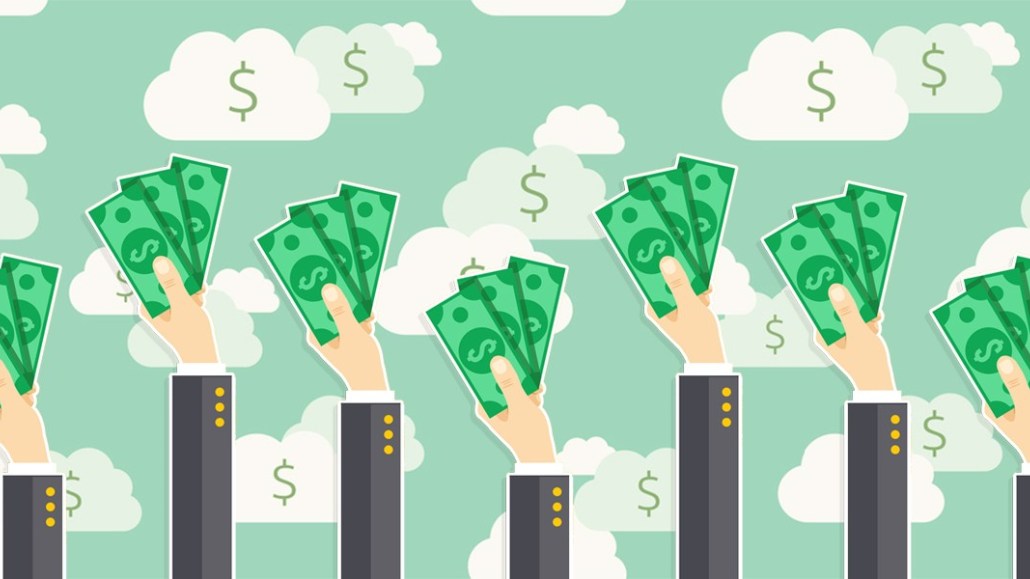‘Marketing at maximum intensity’: Publishers ready for rocketing ad spending from streamers in 2021

After the year we’ve just gone through, it seems dangerous to count on anything going into 2021.
But publishers that cover pop culture and entertainment are already licking their chops at the prospect of more advertising and affiliate revenues coming their way next year, as services including HBO Max and Disney+ keep racing to reach ambitious subscriber targets (and keep subscriber churn under control).
This past year, the entertainment pop culture site Fandom, which reaches 315 million monthly unique users globally, saw revenue from streamers rise 63%, chief revenue officer Ken Shapiro said. Clark Benson, the CEO of Ranker, which covers entertainment among other pop culture and lifestyle topics, said streaming services became the number one advertising category for his sites this year, and he expects even more growth in the category in 2021. A third chief revenue officer, who asked not to be identified, said streaming revenue has grown into a multimillion-dollar source of revenue for their company and is expected to grow more next year.
“Publishers have benefited from this flood of promotions, and I don’t think that’s going to let up at all,” said Andrew Wallenstein, the president and chief media analyst of the Variety Intelligence Platform.
“Shelter at home culture has made the streaming audience fishes in a barrel,” Wallenstein said. “And to take advantage of that audience dynamic, you had to be marketing at maximum intensity, especially because there’s seven, eight, nine other companies doing the exact same thing.”
Through the first three quarters of 2020, brands spent over $205 million promoting streaming services, and another $119 million promoting specific programs available on streaming services, per Nielsen Ad Intel.
As diffuse as the streaming landscape seems at times, it is really dominated by less than a dozen brands, including Netflix, Hulu, Disney+ and HBO Max.
The spending from this small cluster is making up for what had been a tough year for the media and entertainment category as a whole. While media and entertainment ad spending, year to date, is down 28% year over year, pre-recorded media, the sub-category that includes streaming services, is up 71% over the same period, according to Standard Media Index.
And much of the spending in that category has been digital, a major reason why digital ad spending in media and entertainment is down just 14% year over year, compared to the 35% drop Standard Media Index recorded for television.
In many ways, publisher sources said, the ad spending among streamers has been emblematic of the spending patterns that defined digital media in 2020: Lots of quick, small-dollar campaigns — often just $30,000 to $50,000 at a time — run among trusted partners.
While they’re not the glamorous, high-touch campaigns that sales teams usually lust after, they are plentiful, and easy to execute, often relying on standard media formats that can easily be plugged into publishers’ pages. “We’ll take that any day of the week,” Ranker’s Benson said, who noted that Ranker’s close rate on those kinds of programs is above 50%.
The campaigns come in steadily too. Unlike retailers or certain kinds of consumer goods advertisers, who might only send out RFPs around big shopping tentpoles or seasonal holidays, streamer RFPs come out all year, as they look to continually promote the new films and television shows they’ve invested so much in creating.
“If you talk to the streaming services, their biggest concern is churn,” Fandom’s Shapiro said. “They don’t want a consumer to come in on Christmas Day, watch Wonder Woman, then go, ‘I’m out!’”
Opportunities to generate affiliate commissions abound as well. This year, Meredith developed and launched an on-site lead generation module designed to direct readers on sites such as Entertainment Weekly to the streaming services that offer the shows their editorial team covers, said Will Lee, svp of digital for Meredith Entertainment Group.
“We’ve leaned in editorially wherever we can help provide more coverage (volume) of the many streaming options, but also more content that helps audiences discern which of those many options is the right fit for them,” Lee said.
The ad spending is emblematic in another way. The publishers that have done best among streamers have very detailed first party data that allows advertisers to target niche communities of fans, either of content that a service offers or that a rival service has; advertisers will use the latter kind of segments to do what’s called “conquesting,” where they target customers of rival platforms, Shapiro said, hoping to find customers by marketing against their rivals’ services.
The addition of major movies to several streamers’ slates could ratchet things up even more. Last week, HBO Max announced — to an uproar — that every major theatrical release Warner Brothers had planned for 2021 would be available on HBO Max too.
“A medium as marketing-dependent as film is going to put even more weight behind marketing streaming,” Wallenstein said. “Warner has put a lot of pressure on the rest of the field with SVOD.
“I don’t think anyone can just stand pat.”
More in Media

Why some publishers aren’t ready to monetize generative AI chatbots with ads yet
Monetization of generative AI chatbot experiences is slow going. Some publishing execs said they’re not ready to add advertising to these products until they scale or can build a subscription model first.

Media Briefing: Publishers who bet on events and franchises this year are reaping the rewards
Tentpole events and franchises are helping publishers lock in advertising revenue.

With Firefly Image 3, Adobe aims to integrate more AI tools for various apps
New tools let people make images in seconds, create image backgrounds, replacing parts of an image and use reference images to create with AI.





